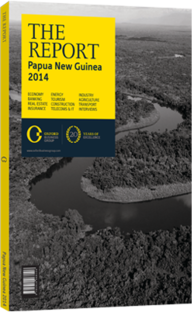OBG talks to Greg Worthington-Eyre, CEO, Trukai Industries

Interview: Greg Worthington-Eyre
How is Papua New Guinea improving food security for its growing population?
GREG WORTHINGTON-EYRE: Traditional commercial crops such as coffee and palm oil provide a vital income for the national economy; however, I am not sure that they meet the needs of food security in PNG. You need the right dietary mix in order to build immune systems against malaria, tuberculosis and other communicable diseases that are common in this country. As far as I’m concerned, this should be a priority.
There are fantastic organic products growing throughout the country, but access from the villages to the main markets of Port Moresby and Lae continues to be a challenge, not only from a logistical point of view, but also in terms of productivity levels. A market structure needs to be introduced in PNG to turn subsistence farming into commercial farming by improving the quality of crops and the consistency of the output. Moreover, the right information needs to be provided when it comes to pest management, weed control, propagation techniques and other concerns over quality.
Could rice be the solution to food insecurity in PNG?
WORTHINGTON-EYRE: Rice is one of the solutions to the problem of food insecurity in PNG, as it can be stored and used when required, as opposed to the more traditional food sources. Its versatility suits the conditions in rural areas well, especially because other grains do not grow as easily in PNG.
However, a certain amount of training is needed to develop rice as part of the village agricultural system. For instance, farmers in PNG have traditionally planted rice seeds at a distance of 30 cm on average, which is based on an Asian style of transplanting into a flooded paddy field, whilst areas in PNG are more suited to upland-style rice growing, which relies on rainfall rather than irrigation. Changing the planting rows to 10cm can improve the yield by maximising land usage, while reducing the natural growth of weeds. Improving yields beyond consumption needs also means that part of the production can be dedicated to exports, which could bring in a much-needed source of income.
What do you see as the advantages of developing local rice production?
WORTHINGTON-EYRE: Developing local production could be beneficial from an economic point of view, as the costs of imports are subject to the rise and fall of other economies. Rice production has proven to be a successful industry in Australia, and the same could be true of PNG, despite the soil structure not being as optimal and the suitable area for plantations being comparatively limited. Having said that, there is flat land available in the country, especially in the Central Province, parts of East and West New Britain and New Ireland.
Statistics on the sector are hard to come by, but unofficial sources estimate rice production to be about 100 tonnes a year, which continues to be undeveloped in comparison to more mature markets. Average annual per capita rice consumption in Port Moresby is approximately 100 kg, and for the country as a whole it is 38kg. A more concerted effort is required to meet this demand. Over the last 20 years, extensive research has been conducted into rice breeding and territory mapping, thoroughly examining soil structure, acidity, flooding and water salinity, among other criteria to identify suitable areas. We know that significant production can be jump-started in PNG.
To what extent is the government supporting the growth of the agricultural industry in PNG?
WORTHINGTON-EYRE: I am happy to say that the present administration seems to be respectful of companies that have made significant investments over the years; it seems keen to keep a level playing field in rice production, while supporting the development of food security. However, as for any sector, investments in infrastructure – especially roads – will serve as capital to spearhead the growth of the industry by connecting remote villages and improving access to markets.
You have reached the limit of premium articles you can view for free.
Choose from the options below to purchase print or digital editions of our Reports. You can also purchase a website subscription giving you unlimited access to all of our Reports online for 12 months.
If you have already purchased this Report or have a website subscription, please login to continue.

